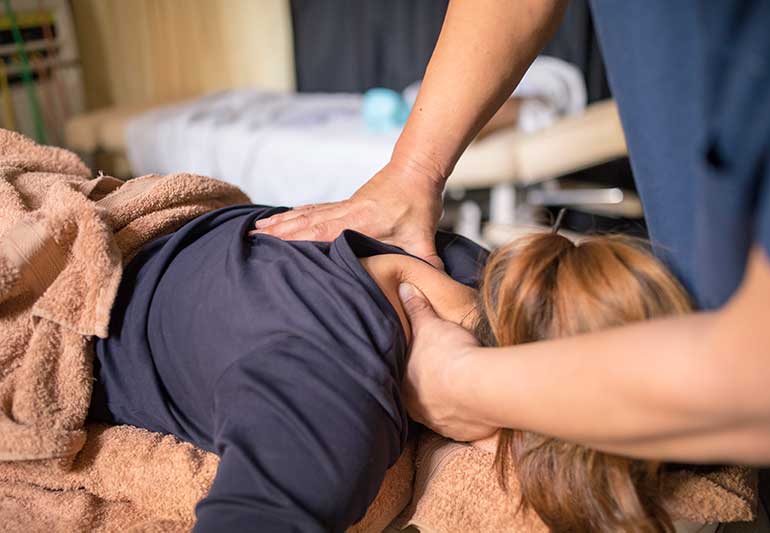
If you’re living with chronic pain or discomfort, it’s natural to want to find whatever way you can to make it all go away. Maybe you’ve tried massage, yoga and chiropractors already.
And then you stumble onto a site about Rolfing. And they’re talking about integrating your whole body. And undoing the effects of gravity. And relieving all of your stress and tension. And you can’t help but wonder, “How does this really work?” We talked with licensed massage therapist Victoria Bodner, LMT, about Rolfing and how it differs from massage.
How is Rolfing different from massage?
Rolfing and massage are both hands-on approaches to releasing tension and bringing about physical and emotional relief. They differ in a few key ways, though.
Massage is more localized
One major difference between Rolfing and massage is that a massage therapist will work with you to address specific areas of concern. Rolfing is a full-body protocol.
“Sometimes, a massage therapist will practice myofascial release, which is a technique that aims to ease tension in the fascia,” Bodner says. “Massage therapists, though, may focus on a specific area where you’re experiencing discomfort. Rolfing is more about elongating fascia all across your body.”
Rolfing aims for structural change
The effects of a good massage can leave you feeling looser and more relaxed for some time. Rolfing, on the other hand, focuses on realigning and integrating your whole body and creating structural changes. The goal is to find long-lasting relief.
“The idea behind Rolfing is that they are ‘reorganizing’ your tissue,” Bodner says. “Some people see it as kind of a reset button to undo some pains and stress and start over with a new comfort in your body.”
Rolfing tends to be more intense
Some forms of massage are more relaxing, while others use more pressure. Consider a quiet spa rub-down versus a deep tissue massage technique. One New York Times story says, “Rolfing has a reputation for being aggressive.” Although, different practitioners may follow different approaches to pressure.
Of course, anytime you have bodywork done, whether with a massage therapist or another practitioner, you should feel empowered to speak up if you’re experiencing pain.
“Fascia isn’t always easy to manipulate,” Bodner states. “Because of that, sometimes Rolfing may need to be more intense depending on the situation.”
Any pain or discomfort associated with fascia manipulation is likely to last only during a session. It shouldn’t linger around after.
Is Rolfing safe?
While based on some proven scientific theories, more research is needed to better understand the safety and risks of Rolfing.
A few small studies have shown Rolfing may help with back pain and fibromyalgia. Another study suggests that Rolfing improved walking in a group of children living with cerebral palsy. Those studies were all done with very small groups of participants, though, and the results haven’t been replicated.
“The idea of manipulating fascia to improve your movement makes good scientific sense,” Bodner says. “We know that fascia gets congested and can lead to pain and tension.”
Bodner says that if you choose to consider Rolfing, make sure you choose a certified practitioner. People living with pain caused by tightened fascia may also want to consider more well-studied therapies like:
- Acupuncture.
- Heat therapy.
- Massage therapy.
- Yoga.